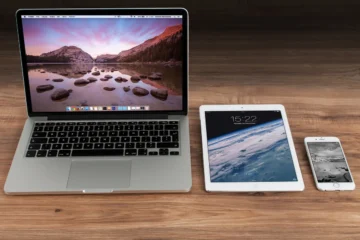Apple’s Sustainability Initiatives
In a world where technology evolves at a rapid pace, it’s easy to forget the environmental impact of our favorite gadgets. But one tech giant, Apple Inc., has been making significant strides in ensuring that its products and operations are more environmentally friendly. Let’s take a closer look at Apple’s sustainability initiatives and how they are helping to shape a greener future for the tech industry.
A Commitment to Renewable Energy
One of Apple’s standout achievements in sustainability is its commitment to using 100% renewable energy to power its operations. This encompasses not only its corporate offices but also its data centers and manufacturing facilities. In fact, the company proudly states that all of its offices and retail stores are powered by renewable energy.
Apple’s data centers, which are crucial for the functioning of iCloud, the App Store, and other services, are now powered by clean energy sources like wind and solar. By transitioning to renewables, Apple has not only reduced its carbon footprint but also set a compelling example for other tech companies to follow.
Product Innovation with a Green Touch
Apple doesn’t stop at making its operations sustainable; it also integrates eco-friendliness into its products. One of the most significant steps in this direction is the use of recycled materials in manufacturing. Apple has made it a priority to source recycled or renewable materials for its products, reducing the need for mining and conserving valuable resources.
For instance, Apple’s iPhone 12 features magnets made from 100% recycled rare earth elements, reducing its impact on the environment. The company has also made progress in using recycled aluminum for its MacBook Air and Mac mini, further illustrating its commitment to reducing its environmental footprint.
Closing the Loop with Recycling Initiatives
Apple is not just concerned with the sustainability of its products during their lifecycle but also what happens to them at the end. Through its Apple Trade-In program, the company encourages customers to return their old devices for recycling or trade-in value, extending the life of materials and reducing electronic waste.
Additionally, Apple is actively investing in advanced recycling technologies to recover valuable materials from old devices. By doing so, it reduces the need for mining and minimizes the environmental impact of producing new gadgets.
Environmental Responsibility and Transparency
Apple understands the importance of transparency when it comes to sustainability. The company regularly releases detailed environmental reports, outlining its progress and goals in reducing its carbon footprint and conserving resources. This transparency allows consumers to make informed choices and holds the company accountable for its commitments.
Conclusion
Apple’s sustainability initiatives are more than just a corporate responsibility; they represent a commitment to building a better future for our planet. By embracing renewable energy, using recycled materials, and promoting recycling programs, Apple is setting a standard for the tech industry. While there is still work to be done, the company’s dedication to a greener future offers hope that the tech we love can coexist harmoniously with the environment. It’s a reminder that in the fast-paced world of technology, we can make choices that benefit both us and the planet we call home.
FAQs
What are Apple’s sustainability initiatives?
Apple’s sustainability initiatives are a set of strategies and actions aimed at reducing the environmental impact of its products and operations. These initiatives include using renewable energy, incorporating recycled materials into products, promoting recycling, and enhancing transparency in environmental reporting.
Why is renewable energy important for Apple’s sustainability efforts?
Renewable energy sources, like wind and solar power, help reduce greenhouse gas emissions associated with energy consumption. Apple uses 100% renewable energy to power its operations, including data centers and retail stores, as part of its commitment to mitigating its carbon footprint.
How does Apple incorporate eco-friendly materials into its products?
Apple strives to use recycled and renewable materials in its product manufacturing. For example, the iPhone 12 features magnets made from 100% recycled rare earth elements, and recycled aluminum is used in some Mac products. These efforts aim to reduce the environmental impact of sourcing and manufacturing materials.
What is the Apple Trade-In program, and how does it contribute to sustainability?
The Apple Trade-In program encourages customers to return their old Apple devices for recycling or trade-in value. This program extends the lifespan of materials, reduces electronic waste, and helps conserve resources, contributing to a more sustainable product lifecycle.
How transparent is Apple about its environmental progress?
Apple is highly transparent about its sustainability efforts. The company regularly releases detailed environmental reports outlining its progress, goals, and achievements in reducing its carbon footprint and conserving resources. This transparency allows consumers to make informed choices and holds Apple accountable for its commitments.
What can consumers do to support Apple’s sustainability initiatives?
Consumers can contribute to Apple’s sustainability efforts by participating in the Apple Trade-In program, properly recycling their old devices, and choosing products made from recycled or renewable materials. Supporting companies with strong environmental commitments encourages sustainability across the tech industry.
Are there any upcoming sustainability goals or initiatives from Apple?
Apple often sets new sustainability goals and initiatives. It’s essential to stay updated through their official announcements and reports to learn about their latest environmental commitments and contributions to a greener tech future.



